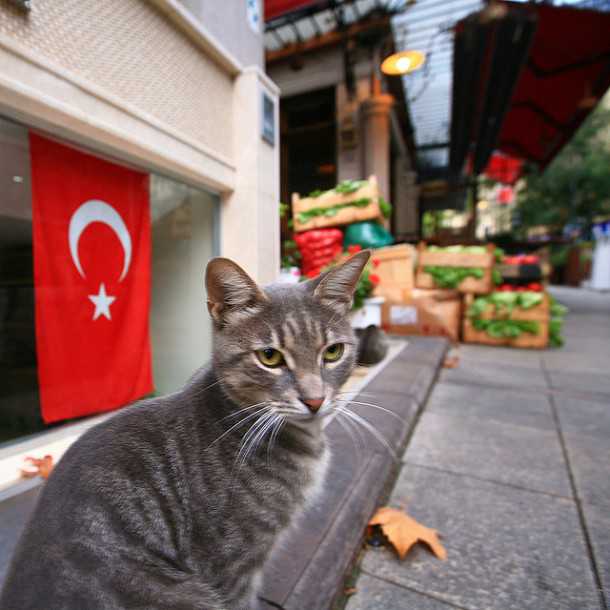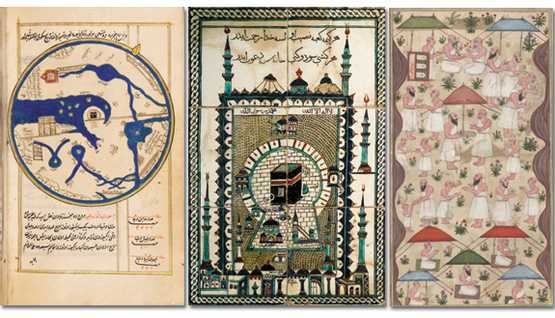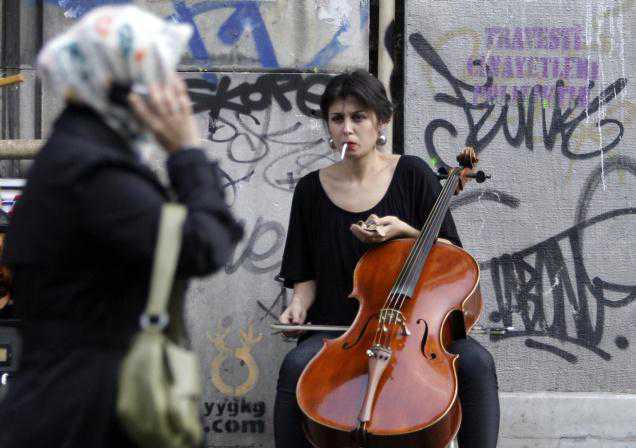Istanbul, An Enchanting Paradise – For Cats
Istanbul, An Enchanting Paradise – For Cats Turkish delight – (laszlo-photo) By Boris Kalnoky
DIE WELT/Worldcrunch

ISTANBUL – Mornings around nine, when shop owners on Galip Dede Street open their doors, dozens of cats appear out of nowhere. They know it’s breakfast time. Not right away: the men first have to unpack new merchandise, stock the shelves, and check the till.
But then they put out bowls of water for the cats, who have been waiting patiently and attentively, and strew generous amounts of dried cat food about. Only then do they drink their own morning tea, standing in front of their shops chatting with each other along the small cobblestone street. Sometimes they play with the animals, teasing them benevolently or stroking them.
This is the time of day after I’ve dropped my daughter off at her school, stopped for a coffee on Istiklal Street and read the papers, and am now slowly wending my way home. And I never fail to be surprised by Istanbul’s animal-loving culture – or the huge numbers of street cats.
A few summers ago the weather was particularly hot, and there was an Istanbul-wide campaign on both the radio and Internet encouraging everybody to put out bowls of water for the cats. Many thousands of people did just that, and water in small plastic bowls or yoghurt pots were everywhere to be seen in the city’s streets.
Customs are different in different countries: in Germany, for example, many people have pets while relatively few have them in Turkey. But the Turkish look after street animals as if they were their own.
Particularly in front of some of the mosques. On Galip Dede Street, a favorite place to stroll in the inner city, mosque cats have become an actual attraction, much caressed and photographed by tourists.
All the benefits of a pet without the inconvenience
This year, city residents for the first time provided their street cats with boxes where cat moms can raise their young. Children particularly get a charge out of this, running over from the playground to cuddle the tiny bundles of fur.
But cats aren’t the only ones with fans among residents and tourists alike. Near the Galata Tower, focal point of my personal small world of narrow streets and aged buildings, along with the cats there’s also a pack of street dogs.
Every morning the butcher next door throws them a massive beef bone that they work on for hours. When they’re done, they get drowsy and don’t budge even if you step over them or take pictures.
All of this is actually a nice solution for parties concerned: people can do the things that are the reason for keeping pets in the first place – care for them, and make their daily lives a little more fun and friendly. And the animals get enough to eat, and learn to know the best places for a little grub.
They also have a lot of freedom, and perhaps a much more interesting albeit harder life than if they were limited to a small apartment or courtyard as is so often the case in Germany.
Read the article in the original language.
Photo by – laszlo-photo
via Istanbul, An Enchanting Paradise – For Cats – Worldcrunch – All News is Global.





